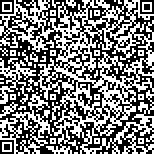| 引用本文: | 屈宁,李明,张玮,刘霞,朱梦圆,邓建明.太湖长孢藻属(Dolichospermum)生物量长期动态变化及驱动因子.湖泊科学,2022,34(3):727-739. DOI:10.18307/2022.0303 |
| Qu Ning,Li Ming,Zhang Wei,Liu Xia,Zhu Mengyuan,Deng Jianming.Long-term trends and driving factors of Dolichospermum biomass in Lake Taihu. J. Lake Sci.2022,34(3):727-739. DOI:10.18307/2022.0303 |
|
| |
|
|
| 本文已被:浏览 4656次 下载 3718次 |

码上扫一扫! |
|
|
| 太湖长孢藻属(Dolichospermum)生物量长期动态变化及驱动因子 |
|
屈宁1,2, 李明2, 张玮3, 刘霞1, 朱梦圆1, 邓建明1
|
|
1.中国科学院南京地理与湖泊研究所, 湖泊与环境国家重点实验室, 南京 210008;2.西北农林科技大学资源环境学院, 杨凌 712100;3.上海海洋大学水产与生命学院, 农业农村部鱼类营养与环境生态研究中心, 上海 201306
|
|
| 摘要: |
| 针对近年来太湖水体中长孢藻(Dolichospermum,曾用名鱼腥藻Anabaena)比例增加的趋势,本文研究了2005—2019年太湖春季不同湖区长孢藻生物量的长期变化趋势和空间差异,探究了冬、春季气象条件(气温、日照时长、风速、降雨量)和营养盐(总氮、总磷)水平对其的影响.结果表明,2005—2019年太湖监测数据显示春季长孢藻生物量有比较明显的升高现象,主要发生在竺山湖富营养程度较高的区域,其次是湖心区、梅梁湾和南部湖区.偏最小二乘路径建模(PLS-PM)结果表明,不同湖区长孢藻生物量变化的主要驱动因素存在差异.在湖心区,春季长孢藻的生物量主要受冬季气候条件(气温、风速、日照时长)的影响,其次受春季营养盐和春季气候条件的影响.在梅梁湾、竺山湖和南部湖区,春季长孢藻的生物量主要受春季气候条件的影响.在梅梁湾和竺山湖,春季风速、日照时长是春季长孢藻生物量的显著影响因子;在南部湖区,春季长孢藻生物量的主要驱动因素是春季的日照时长和春季气温.本研究从长时间序列角度,对太湖固氮蓝藻的时空分布特征和影响因素开展了研究,为太湖不同湖区开展针对性的藻类水华防控和富营养化治理提供理论基础. |
| 关键词: 太湖|长孢藻|气候条件|营养盐|偏最小二乘路径建模 |
| DOI:10.18307/2022.0303 |
| 分类号: |
| 基金项目:国家自然科学基金项目(41971146)和中国科学院南京地理与湖泊研究所青年科学家小组项目(E1SL002)联合资助. |
|
| Long-term trends and driving factors of Dolichospermum biomass in Lake Taihu |
|
Qu Ning1,2, Li Ming2, Zhang Wei3, Liu Xia1, Zhu Mengyuan1, Deng Jianming1
|
|
1.State Key Laboratory of Lake Science and Environment, Nanjing Institute of Geography and Limnology, Chinese Academy of Sciences, Nanjing 210008, P. R. China;2.Natural Resources and Environment College, Northwest A & F University, Yangling 712100, P. R. China;3.Center for Research on Environmental Ecology and Fish Nutrient (CREEFN) of Ministry of Agriculture and Rural Affairs, College of Fisheries and Life Science, Shanghai Ocean University, Shanghai 201306, P. R. China
|
| Abstract: |
| In recent years, the proportion of Dolichospermum (formerly known as Anabaena) has increased trends in Lake Taihu. In order to estimate the spatial differences and driving factors of long-term trends of Dolichospermum in Lake Taihu, we studied the long-term trends of Dolichospermum biomass in different areas of Lake Taihu in spring from 2005 to 2019, and investigated the effects of both spring and winter meteorological conditions (temperature, duration of sunshine, windspeed and rainfall) and nutrient levels (total nitrogen and total phosphorus). The monitoring data of Lake Taihu showed that spring Dolichospermum increased from 2005 to 2019, which mainly occurred in Zhushan Lake, followed by the Lake Center, Meiliang Bay, South Lake. The analysis of partial least squares path modeling (PLS-PM) showed that the main driving factors of the changes in the biomass of Dolichospermum in different areas were different. In the Lake Center, the biomass of Dolichospermum in spring was mainly affected by winter climatic conditions (temperature, windspeed and sunshine), and secondly by spring nutrients and spring climatic conditions. In Meiliang Bay, Zhushan Lake, and South Lake, the biomass of Dolichospermum in spring was mainly affected by spring climatic conditions. In Meiliang Bay and Zhushan Lake, spring windspeed and sunshine duration were significant factors influenced the biomass of Dolichospermum in spring. In South Lake, the main driving factors for the biomass of Dolichospermum in spring were the sunshine and the temperature in spring. This study conducted the temporal and spatial distribution characteristics and influencing factors of nitrogen-fixing cyanobacteria in Lake Taihu from a long-term sequence perspective, and provided a theoretical basis for the prevention and control of algal blooms and eutrophication in different areas of Lake Taihu. |
| Key words: Lake Taihu|Dolichospermum|meteorological factors|nutrients|Partial Least Squares Path Modeling |
|
|
附件
|
|